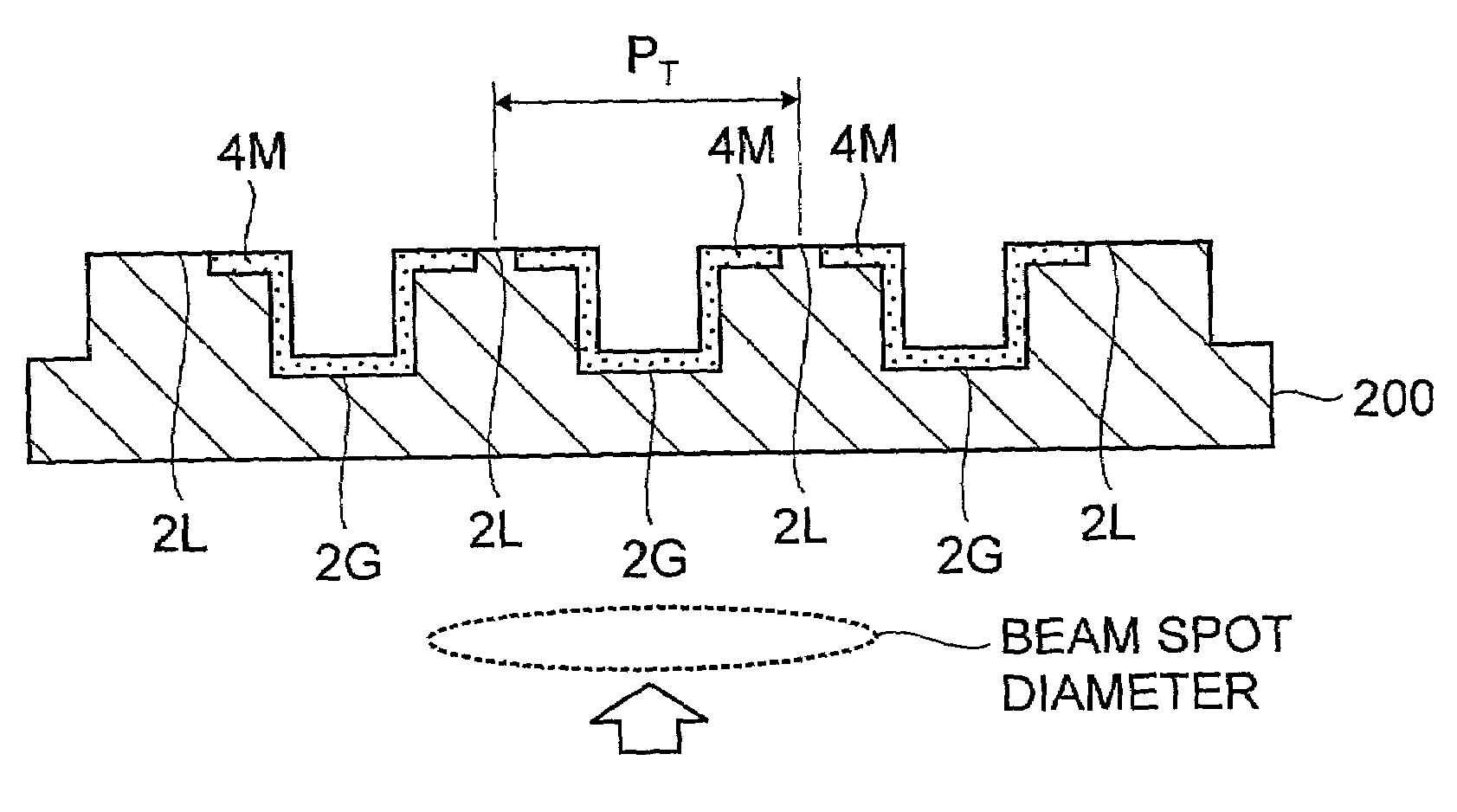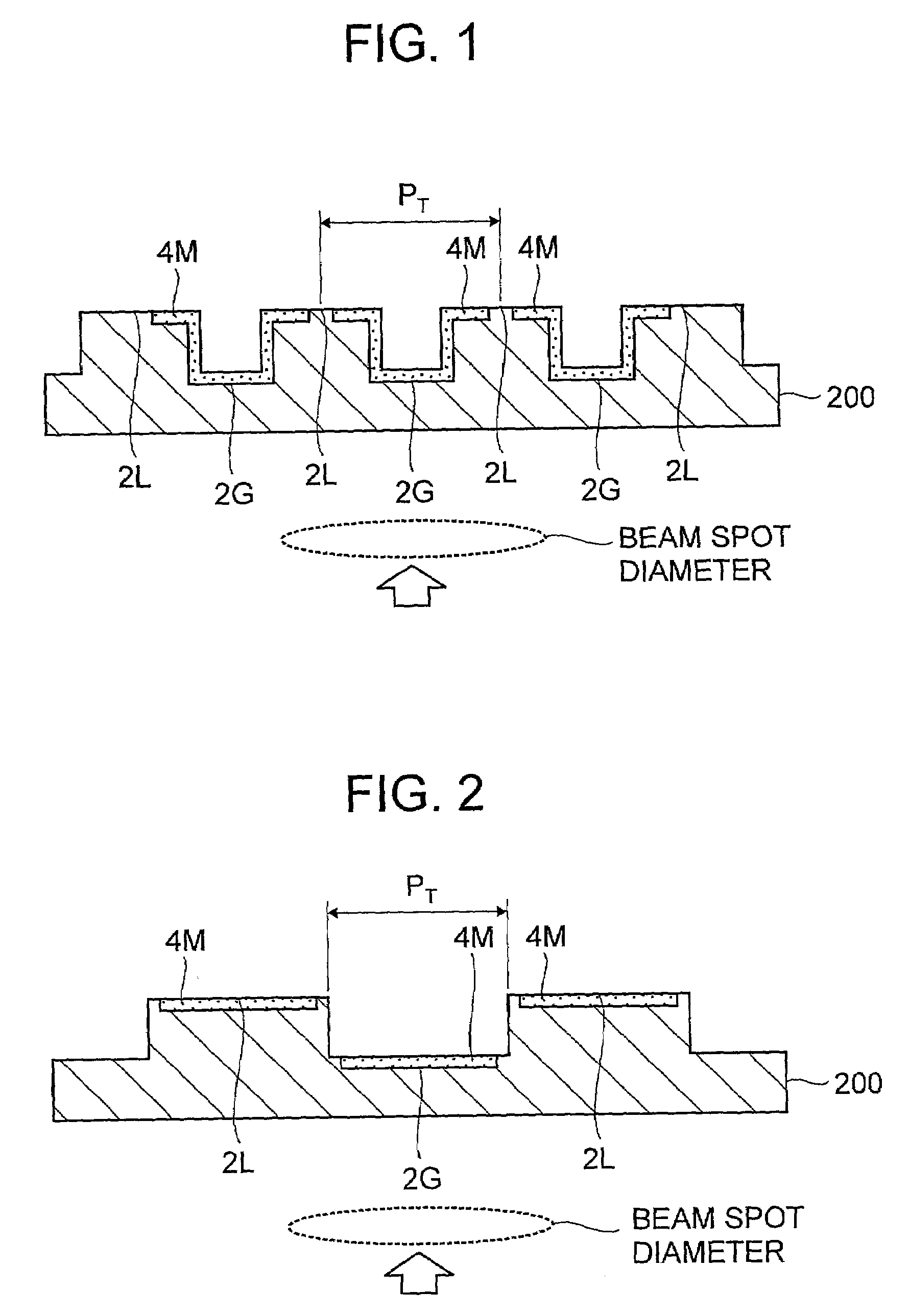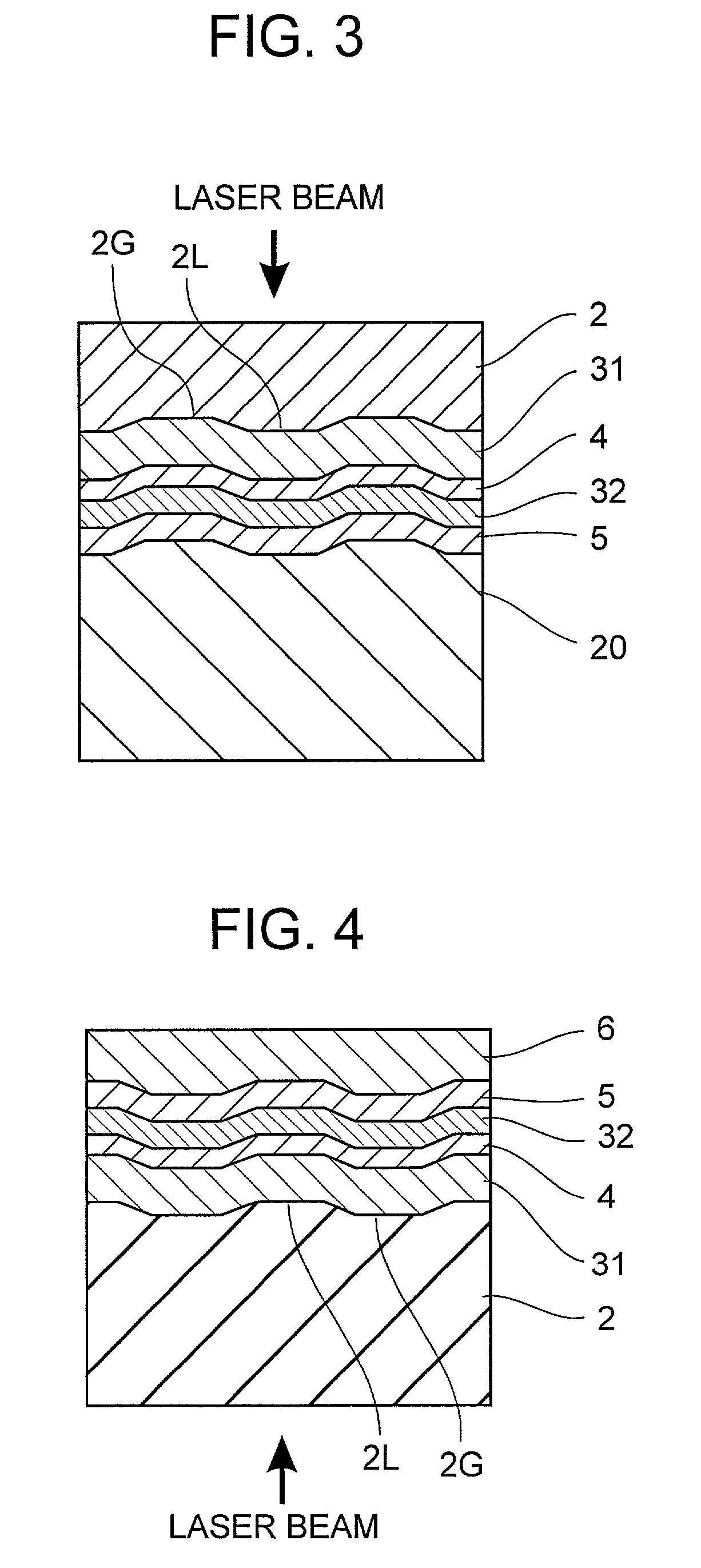Optical recording method and medium
- Summary
- Abstract
- Description
- Claims
- Application Information
AI Technical Summary
Benefits of technology
Problems solved by technology
Method used
Image
Examples
example 1
[0089]Optical recording disk samples of the structure illustrated in FIG. 3, capable of recording in the groove or land / groove recording mode, were prepared by the following procedure.
[0090]The supporting substrate 20 used was formed by molding polycarbonate into a disk having a diameter of 120 mm and a thickness of 1.2 mm. The supporting substrate was provided on its surface with a recess and protrusion pattern which would form grooves and lands in a light-transparent substrate 2 after transfer.
[0091]The reflective layer 5 was formed by sputtering in an Ar atmosphere. The target used was Ag98Pd1Cu1. The reflective layer was 100 nm thick and had a thermal conductivity of 170 W / mK.
[0092]The second dielectric layer 32 was formed by sputtering an Al2O3 target in an Ar atmosphere. The second dielectric layer was 20 nm thick. The Al2O3 used as the target had a thermal conductivity of 10.5 W / mK.
[0093]The recording layer 4 was formed by sputtering an alloy target in an Ar atmosphere. The r...
example 2
[0110]Optical recording disk samples were fabricated as in Example 1 except that a supporting substrate 20 having a high dimensional precision in groove width was used and the track pitch PT was as shown in Table 2. It is noted that PT in Table 2 is not the imaginary track pitch in Example 1, but an actual track pitch.
[0111]These samples were evaluated as in Example 1. The results are shown in Table 2. After recording in each sample according to the groove recording mode, a photomicrograph of the recording layer was taken through a transmission electron microscope. From the photomicrograph, the recorded mark width Mw was determined, and its ratio to groove width Gw and its ratio to track pitch PT were calculated. As a result, Mw / Gw was in the range between 2.0 and 2.8, and Mw / PT was in the range between 0.70 and 0.86.
[0112]
TABLE 2λ = 405 nm, NA = 0.85Cross-erasing (dB)GrooveLand / groovePTPT / recordingrecording(μm)(λ / NA)G-XEG-XEL-XE0.330.6930−0.700.300.6300−1.100.280.5880−2.600.260.546...
example 3
[0114]Optical recording disk samples of the structure illustrated in FIG. 4, capable of recording in the groove or land / groove recording mode, were prepared by the following procedure.
[0115]The light-transparent substrate 2 was formed by injection molding polycarbonate into a disk having a diameter of 120 mm and a thickness of 0.6 mm in which grooves were simultaneously formed. In each of the groove recording mode and land / groove recording mode, the track pitch PT was as shown in Table 3. In the media of the groove recording mode, the groove width Gw was set so that Gw / PT might fall in the range between 0.30 and 0.35. In the media of the land / groove recording mode, the groove width was equal to the land width.
[0116]The first dielectric layer 31 was formed by sputtering a target of ZnS (80 mol %) and SiO2 (20 mol %) in an Ar atmosphere. The first dielectric layer was 80 nm thick.
[0117]The recording layer 4 was formed by sputtering an alloy target in an Ar atmosphere. The recording la...
PUM
 Login to View More
Login to View More Abstract
Description
Claims
Application Information
 Login to View More
Login to View More - R&D
- Intellectual Property
- Life Sciences
- Materials
- Tech Scout
- Unparalleled Data Quality
- Higher Quality Content
- 60% Fewer Hallucinations
Browse by: Latest US Patents, China's latest patents, Technical Efficacy Thesaurus, Application Domain, Technology Topic, Popular Technical Reports.
© 2025 PatSnap. All rights reserved.Legal|Privacy policy|Modern Slavery Act Transparency Statement|Sitemap|About US| Contact US: help@patsnap.com



